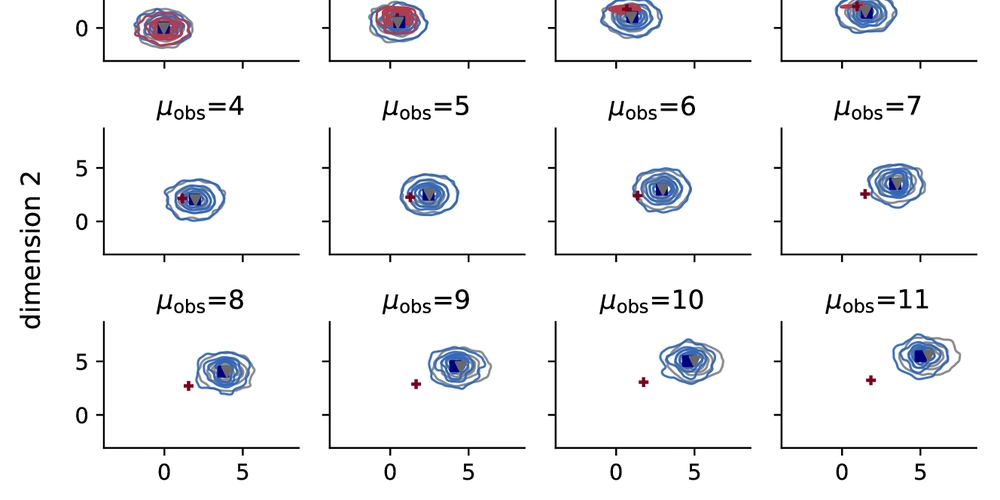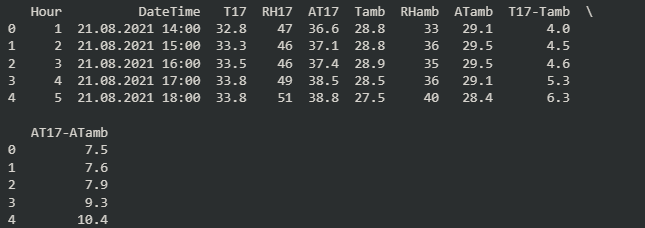Laravel’s Eloquent ORM is one of the most powerful tools in the PHP ecosystem. But let’s be honest, most developers stick to get(), where(), and find(). Eloquent actually has many hidden features that can help you write cleaner, faster, and more maintainable code. In this blog, you’ll discover 10 lesser-known Eloquent methods and techniques that will level up your Laravel skills. Table of Contents withWhereHas() – Filter and Eager Load in One Query cursorPaginate() – Paginate Large Datasets Efficiently sole() – Ensure Only One Record Exists upsert() – Insert or Update Multiple Rows at Once lazy() – Loop Through Big Data Without Memory Issues findMany() – Fetch Multiple Records Easily whereBelongsTo() – Query Using a Model Instance is() – Compare Models Safely firstOrCreate() and updateOrCreate() – Atomic Record Handling tap() – Inspect Queries in the Middle of a Chain 1. withWhereHas() – Filter and Eager Load in One Query $posts = Post::withWhereHas('comments', function ($query) { $query->where('approved', true); })->get(); Why it’s useful: Avoids multiple queries Reduces memory usage Keeps your code concise 2. cursorPaginate() – Paginate Large Datasets Efficiently $users = User::orderBy('id')->cursorPaginate(50); Why it’s useful: Great for infinite scroll or continuous loading Handles large datasets without slowing down 3. sole() – Ensure Only One Record Exists $user = User::where('email', 'admin@example.com')->sole(); Why it’s useful: Eliminates silent bugs Ensures data uniqueness and consistency 4. upsert() – Insert or Update Multiple Rows at Once User::upsert( [ ['email' => 'one@test.com', 'name' => 'User One'], ['email' => 'two@test.com', 'name' => 'User Two'], ], ['email'], // Unique column ['name'] // Columns to update ); Why it’s useful: Prevents duplicates Minimizes database load 5. lazy() – Loop Through Big Data Without Memory Issues User::where('active', true)->lazy()->each(function ($user) { // Process user }); Why it’s useful: Keeps memory usage low Perfect for batch jobs, exports, and reporting 6. findMany() – Fetch Multiple Records Easily $users = User::findMany([1, 3, 5]); Why it’s useful: Cleaner syntax More efficient than multiple queries 7. whereBelongsTo() – Query Using a Model Instance Post::whereBelongsTo($user)->get(); Why it’s useful: More readable and expressive Helps when working directly with models 8. is() – Compare Models Safely if ($post->author->is($currentUser)) { // Perform action } Why it’s useful: Safer than manual comparisons Works with unsaved models too 9. firstOrCreate() and updateOrCreate() – Atomic Record Handling $user = User::updateOrCreate( ['email' => 'someone@example.com'], ['name' => 'Someone New'] ); Why it’s useful: Avoids duplicate records Clean and readable 10. tap() – Inspect Queries in the Middle of a Chain User::where('active', true) ->tap(function ($query) { logger($query->toSql()); }) ->get(); Why it’s useful: Great for debugging Keeps the method chain intact Final Thoughts Laravel Eloquent is packed with powerful features that go beyond the basics. By using these lesser-known methods, you can write code that is not only more efficient but also easier to maintain and scale. Whether you're building APIs, admin panels, or full-blown applications, these tips will give your Laravel skills an extra edge. Useful Links Official Eloquent Documentation More Laravel Tips on Dev.to Follow Me on GitHub for Laravel projects and tutorials

Laravel’s Eloquent ORM is one of the most powerful tools in the PHP ecosystem. But let’s be honest, most developers stick to get(), where(), and find(). Eloquent actually has many hidden features that can help you write cleaner, faster, and more maintainable code.
In this blog, you’ll discover 10 lesser-known Eloquent methods and techniques that will level up your Laravel skills.
Table of Contents
- withWhereHas() – Filter and Eager Load in One Query
- cursorPaginate() – Paginate Large Datasets Efficiently
- sole() – Ensure Only One Record Exists
- upsert() – Insert or Update Multiple Rows at Once
- lazy() – Loop Through Big Data Without Memory Issues
- findMany() – Fetch Multiple Records Easily
- whereBelongsTo() – Query Using a Model Instance
- is() – Compare Models Safely
- firstOrCreate() and updateOrCreate() – Atomic Record Handling
- tap() – Inspect Queries in the Middle of a Chain
1. withWhereHas() – Filter and Eager Load in One Query
$posts = Post::withWhereHas('comments', function ($query) {
$query->where('approved', true);
})->get();
Why it’s useful:
- Avoids multiple queries
- Reduces memory usage
- Keeps your code concise
2. cursorPaginate() – Paginate Large Datasets Efficiently
$users = User::orderBy('id')->cursorPaginate(50);
Why it’s useful:
- Great for infinite scroll or continuous loading
- Handles large datasets without slowing down
3. sole() – Ensure Only One Record Exists
$user = User::where('email', 'admin@example.com')->sole();
Why it’s useful:
- Eliminates silent bugs
- Ensures data uniqueness and consistency
4. upsert() – Insert or Update Multiple Rows at Once
User::upsert(
[
['email' => 'one@test.com', 'name' => 'User One'],
['email' => 'two@test.com', 'name' => 'User Two'],
],
['email'], // Unique column
['name'] // Columns to update
);
Why it’s useful:
- Prevents duplicates
- Minimizes database load
5. lazy() – Loop Through Big Data Without Memory Issues
User::where('active', true)->lazy()->each(function ($user) {
// Process user
});
Why it’s useful:
- Keeps memory usage low
- Perfect for batch jobs, exports, and reporting
6. findMany() – Fetch Multiple Records Easily
$users = User::findMany([1, 3, 5]);
Why it’s useful:
- Cleaner syntax
- More efficient than multiple queries
7. whereBelongsTo() – Query Using a Model Instance
Post::whereBelongsTo($user)->get();
Why it’s useful:
- More readable and expressive
- Helps when working directly with models
8. is() – Compare Models Safely
if ($post->author->is($currentUser)) {
// Perform action
}
Why it’s useful:
- Safer than manual comparisons
- Works with unsaved models too
9. firstOrCreate() and updateOrCreate() – Atomic Record Handling
$user = User::updateOrCreate(
['email' => 'someone@example.com'],
['name' => 'Someone New']
);
Why it’s useful:
- Avoids duplicate records
- Clean and readable
10. tap() – Inspect Queries in the Middle of a Chain
User::where('active', true)
->tap(function ($query) {
logger($query->toSql());
})
->get();
Why it’s useful:
- Great for debugging
- Keeps the method chain intact
Final Thoughts
Laravel Eloquent is packed with powerful features that go beyond the basics. By using these lesser-known methods, you can write code that is not only more efficient but also easier to maintain and scale.
Whether you're building APIs, admin panels, or full-blown applications, these tips will give your Laravel skills an extra edge.
Useful Links
- Official Eloquent Documentation
- More Laravel Tips on Dev.to
- Follow Me on GitHub for Laravel projects and tutorials










































![Mobile Legends: Bang Bang [MLBB] Free Redeem Codes April 2025](https://www.talkandroid.com/wp-content/uploads/2024/07/Screenshot_20240704-093036_Mobile-Legends-Bang-Bang.jpg)
























![Apple Releases iOS 18.5 Beta 3 and iPadOS 18.5 Beta 3 [Download]](https://www.iclarified.com/images/news/97076/97076/97076-640.jpg)
![Apple Seeds visionOS 2.5 Beta 3 to Developers [Download]](https://www.iclarified.com/images/news/97077/97077/97077-640.jpg)
![Apple Seeds tvOS 18.5 Beta 3 to Developers [Download]](https://www.iclarified.com/images/news/97078/97078/97078-640.jpg)
![Apple Seeds watchOS 11.5 Beta 3 to Developers [Download]](https://www.iclarified.com/images/news/97079/97079/97079-640.jpg)













![Lenovo shows off its next 8.8-inch Legion Tab with vague AI promises [Gallery]](https://i0.wp.com/9to5google.com/wp-content/uploads/sites/4/2025/04/lenovo-legion-tab-y700-2025-1.jpg?resize=1200%2C628&quality=82&strip=all&ssl=1)































































































_Tanapong_Sungkaew_via_Alamy.jpg?width=1280&auto=webp&quality=80&disable=upscale#)




















































































![[The AI Show Episode 144]: ChatGPT’s New Memory, Shopify CEO’s Leaked “AI First” Memo, Google Cloud Next Releases, o3 and o4-mini Coming Soon & Llama 4’s Rocky Launch](https://www.marketingaiinstitute.com/hubfs/ep%20144%20cover.png)























































































































![BPMN-procesmodellering [closed]](https://i.sstatic.net/l7l8q49F.png)
















![From fast food worker to cybersecurity engineer with Tae'lur Alexis [Podcast #169]](https://cdn.hashnode.com/res/hashnode/image/upload/v1745242807605/8a6cf71c-144f-4c91-9532-62d7c92c0f65.png?#)




































































































